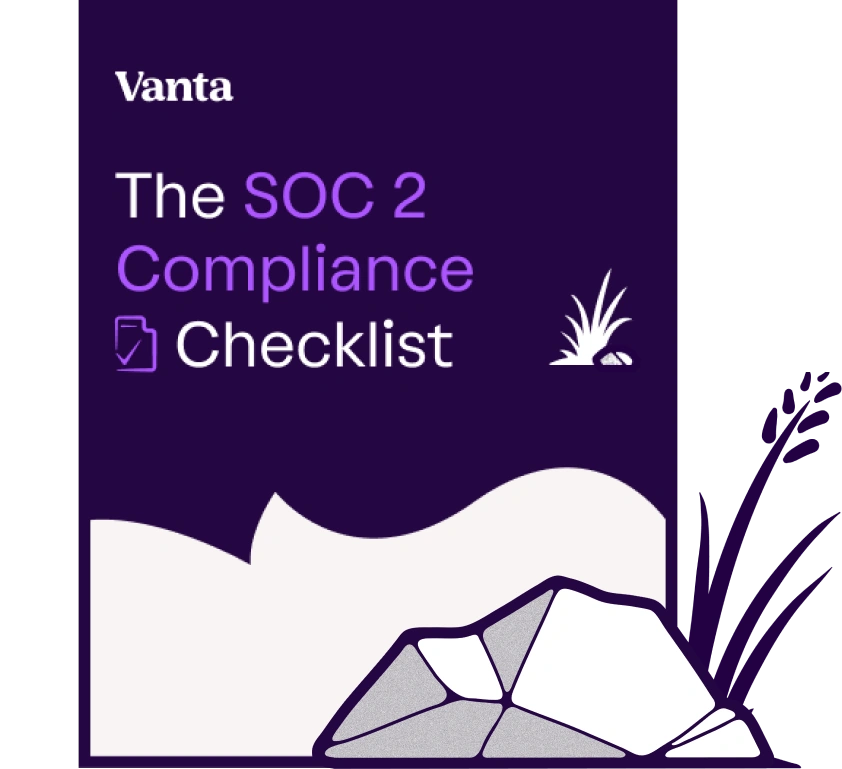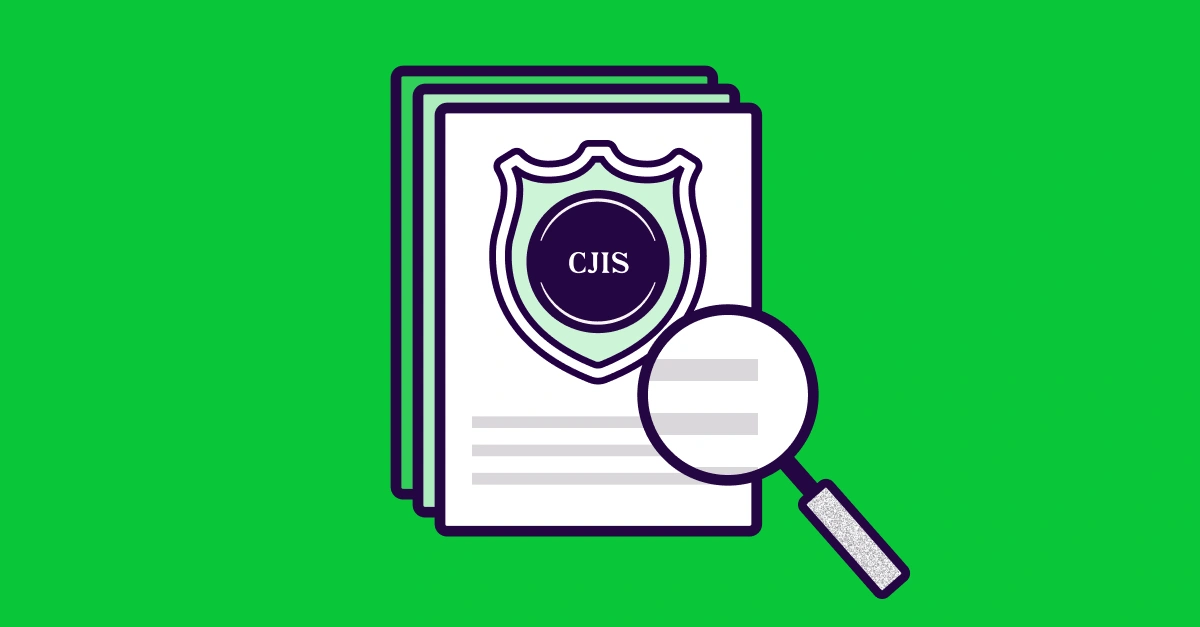Share this article

Fintech compliance: A guide to risks and regulations in 2025
Accelerating security solutions for small businesses Tagore offers strategic services to small businesses. | A partnership that can scale Tagore prioritized finding a managed compliance partner with an established product, dedicated support team, and rapid release rate. | Standing out from competitors Tagore's partnership with Vanta enhances its strategic focus and deepens client value, creating differentiation in a competitive market. |
While fintech has helped streamline operations for financial institutions and everyday consumers, it has also introduced new risks that you must account for. According to the CyberCube Global Threat Outlook H1-2024, fintech is one of the top five sectors with the highest exposure to cybersecurity threats.
This level of risk has led to increased scrutiny from regulators and customers, making it essential for fintech organizations to demonstrate a strong security posture through compliance with various regulations and frameworks.
In this article, we’ll dive into fintech compliance, discussing the unique industry risks as well as the top regulations and frameworks in the space.
What is fintech compliance?
Fintech compliance is the adherence to standards and regulations that ensure the security, integrity, and confidentiality of financial and other sensitive customer data is upheld. Compliance is particularly important for fintech organizations due to their unique dual position:
- Technology innovators: Creating fast-evolving solutions such as AI, APIs, and open banking platforms
- Service providers: Acting as third-party service providers or processors for organizations in the heavily regulated financial sector
The mandatory regulations that your organization may need to pursue depend on:
- Jurisdiction: Whether you’re operating in or expanding to the EU, the US, or another region
- Customer profile: If you primarily serve banks (including neobanks and crypto platforms), the payment card industry, B2C, or B2B fintech customers
- Nature of services: Whether you offer fraud prevention tools, lending platforms, identity verification, or other services
You can also pursue voluntary attestations, such as SOC 2 or ISO 27001, to demonstrate your organization’s commitment to information security and build trust with partners and customers.
{{cta_withimage3="/cta-blocks"}}
Why fintech compliance matters
Although fintech compliance requires significant time and resource investment, it brings several benefits to your organization:
- Demonstrable trust to stakeholders: Regulatory alignment helps you earn trust from customers, investors, and potential partners. Verifiable controls with measurable results also reassures your board that information security is a top priority.
- Resilient security posture: Implementing the security-first practices outlined in widely recognized fintech regulations and frameworks strengthens your overall security posture and minimizes the risk of breaches or data mishandling.
- Accelerated onboarding and sales cycles: Certifications and attestations help you demonstrate your compliance during sales cycles and reduce the need for exhaustive security reviews.
- Greater credibility in regulated markets: Demonstrating your organization’s alignment with relevant frameworks shows dedication to data security and privacy, making it easier to operate in regulated markets.
- Enhanced operational resilience: Understanding your organization’s regulatory and compliance environment helps improve risk awareness, which often leads to proactive business continuity planning and vendor risk management.
What risks do fintech organizations face?
Since fintech organizations operate as both tech providers and key third parties, they are exposed to risks from both markets that must be tracked and mitigated.
The most common risks they face can be divided into four categories:
- Regulatory risk: The fintech regulatory environment is complex, and priorities can significantly change depending on where your organization operates. This increases the risk of non-compliance, which can result in financial penalties, legal escalation or restrictions, and the loss of licenses or registrations to operate.
- Cybersecurity risk: Fintech organizations handle sensitive data and operate attractive targets for malicious actors. Weaknesses in infrastructure, misconfigurations, or unpatched systems can lead to data breaches, fraud, or service disruption.
- Third-party/vendor risk: Fintechs often rely on cloud providers, open banking APIs, and other vendors to deliver services creating a broad attack surface. Failures or security lapses at a vendor can cascade into your own environment. Strong vendor due diligence, continuous monitoring, and contractual risk controls are essential.
- Operational risks: Regular updates and evolving technologies introduce new potential vulnerabilities that can easily lead to operational disruptions and downtime. Balancing innovation and operational risks with strong internal controls is key to minimizing potential downtime in case of an incident.
- Reputational risk: Failures in customer experience, regulatory violations, and security breaches can damage customer and partner confidence in fintech services, potentially leading them to turn to more reliable competition.
7 fintech frameworks and regulations to consider
Ensuring regulatory alignment means that your organization must navigate a mix of mandatory regulations and voluntary standards, the specifics of which vary depending on where your organization operates and who it partners with.
Achieving compliance requires significant time and resources, so you’ll need to carefully consider the frameworks you should pursue. Coordinate with your business teams to see which frameworks have the biggest impact and which may be deal breakers. Aligning early helps you stay ahead of customer demands.
The seven most relevant standards and regulations for fintech are:
1. DORA
The Digital Operational Resilience Act (DORA) is a mandatory regulation that aims to strengthen the cybersecurity and resilience of financial entities operating within the EU. If your organization works with EU-based financial institutions, you may need to comply with DORA, regardless of where you’re located. For example, even if U.S. fintech isn’t designated “critical,” it may still need to comply contractually when serving EU-based financial institutions.
The framework is based on five foundational principles, known as the five pillars, which cover various aspects of risk management and cybersecurity. The table below for a brief overview of each:
DORA non-compliance can result in various penalties, depending on the severity of the violation and the main enforcing body for your region. Some of the consequences include:
- Cease and desist orders for non-compliant operations
- Temporary or permanent suspension of non-compliant activities
- Legal escalation for severe security issues or data breaches
2. PCI DSS
The Payment Card Industry Data Security Standard (PCI DSS) is a framework of security standards created by the five major credit card brands that form the Payment Card Industry Security Standards Council.
Compliance with PCI DSS isn’t a legal requirement, but it is considered a security best practice in the financial industry. Many financial organizations and payment processors make compliance with PCI DSS a contractual obligation, so you’ll need to pursue it to secure business deals.
PCI DSS was created to help organizations that handle cardholder data implement safeguards across six categories, strengthening their security posture and protecting it from theft and fraud during and after payment processing.
Key PCI DSS requirements include:
- Implementing and maintaining a firewall to protect cardholder data
- Using encryption when transmitting information
- Implementing role-based access
- Employing the minimum necessary principle
- Regularly reviewing systems and processes
3. NIS 2
The Network and Information Security 2 (NIS 2) directive is an update to the original NIS directive, created to address regulatory gaps and strengthen cybersecurity resilience across 18 sectors within EU Member States.
If your organization provides services to EU-based financial institutions, it may have to comply with NIS 2, regardless of its location. Depending on its size and the type of services provided in the financial sector, your organization may be classified as an important entity under the directive.
In this case, you’d have to comply with various strict security requirements, including:
- Building an actionable business continuity plan
- Establishing clear incident handling procedures
- Strengthening supply chain security
- Documenting cybersecurity and risk analysis policies
The penalties for non-compliance depend on the severity of the violation and range from non-monetary penalties such as compliance orders to significant administrative fines, and in severe cases, criminal sanctions.
{{cta_withimage3="/cta-blocks"}}
4. GDPR
The GDPR is a regulation in the EU that sets the baseline standards for how organizations can collect, store, and use the personal data of individuals. This regulation is particularly relevant for fintech organizations as they often handle large volumes of sensitive information.
GDPR is location agnostic. If your organization collects, processes, or transmits EU citizen information as part of its main operations, you will have to meet compliance requirements. Non-compliance can result in severe financial penalties or corrective action, such as warnings, reprimands, and limiting data processing.
Some of the requirements you’ll have to meet to achieve GDPR compliance include:
- Establishing a legal basis for data processing
- Integrating comprehensive data protection into your service
- Ensuring adequate processing security
- Documenting processing activities
5. SOC 2
System and Organization Controls 2 (SOC 2) is a cybersecurity framework and attestation program designed for organizations that collect, store, and process information. Its main purpose is to help organizations build a strong security posture that ensures sensitive data remains private and secure.
Compliance with SOC 2 isn’t mandatory, but it can still be beneficial, especially for fintech organizations. A SOC 2 (Type 1 or Type 2) attestation gives you demonstrable proof of your dedication to data security, which helps enhance the trust of potential partners, customers, and investors.
SOC 2 is built on five service criteria:
- Security: Secure sensitive data from unintentional disclosure and unauthorized access
- Availability: Ensure your systems are available to authorized users for their intended purpose
- Processing Integrity: Support accurate, valid, and timely data processing across your systems
- Confidentiality: Protect sensitive information from being disclosed or used for anything but its intended purpose
- Privacy: Keep customer data private and ensure that collection, processing, and disposal are transparent
{{cta_withimage22="/cta-blocks"}}
6. ISO 27001
ISO/IEC 27001:2022 is an international standard for creating, maintaining, and continually improving information security management systems (ISMS). The framework's focus on risk and structured approach to controls can help fintech organizations maintain a secure digital ecosystem end to end.
Pursuing ISO 27001 certification is voluntary, but it’s highly recommended since it includes industry-best practices that show regulators, partners, and customers that your security program is mature and consistently improving.
Requirements for ISO 27001 compliance include:
- Risk assessment and treatment procedures: Create procedures that allow you to efficiently identify, evaluate, and mitigate risks associated with sensitive information
- Information security policies: Implement strict security policies that outline how your organization approaches data security
- Staff training: Conduct frequent training sessions to ensure stakeholders are aware of security risks and know how to respond to them
- Continuous improvement: Monitor and regularly audit and update your ISMS to address emerging threats, changes in your risk environment, and continually strengthen your security posture
ISO 27001 shares controls with several other frameworks, such as SOC 2, DORA and the GDPR, so achieving certification can help you streamline efforts should you need to broaden your compliance program.
7. CPS 234
Prudential Standard or CPS 234 is an Australian information security standard that requires financial entities to implement robust safeguards and practices. It was issued by Australian Prudential Regulatory Authority (APRA) in 2019, and has since helped organizations protect sensitive data from cyberthreats and effectively manage the associated risks.
CPS 234 is binding in nature—compliance is mandatory for APRA-regulated financial institutions, including general insurers, superannuation funds, and private health insurers. Non-compliance typically carries heavy fines and sanctions—even civil or criminal proceedings in severe cases.
Some of the key requirements for complying with CPS 234 include:
- Develop and maintain information security capabilities proportional to organizational risk
- Define roles and responsibilities across all aspects of your information security strategy
- Share the necessary guidance with team members through a robust policy
- Classify all information assets as per their criticality and sensitivity
- Implement controls to protect your information assets
- Regularly test control effectiveness
- Report security breaches to APRA within the defined timeframes
Challenges of fintech compliance
Due to the complex nature of financial regulations, ongoing compliance to meet industry expectations can be challenging. Often organizations will not only have one framework to align and comply with which not only creates complexity but can result in duplicative efforts if not managed well. This is particularly true for resource-constrained organizations and those with a still-maturing security posture, which may lack the expertise or capacity to effectively implement the required controls.
Some of the most common fintech compliance challenges include:
- Staying up to date with regulatory changes: The fintech regulatory landscape is constantly shifting, especially with AI technologies becoming increasingly embedded in the industry, which triggers regulatory changes that require frequent reviews to keep pace.
- Continuous control monitoring across distributed systems: Ongoing compliance efforts require that you monitor your security controls at all times, which can be complex when done across different teams, regions, and cloud environments.
- Collecting audit-ready evidence on demand: Many frameworks require detailed documentation and regular audits to align your controls with requirements. Gathering the necessary compliance evidence across siloed technologies can be time-consuming and introduce the risk of errors.
- Coordinating policy updates with tech changes: As your organization grows and infrastructure updates occur, your policies and procedures must evolve to reflect the changes. Coordinating your internal documentation with tech changes can be a slow, complex process as it often requires cross functional efforts.
When conducted manually, these workflows put significant pressure on not only your compliance teams but multiple functions across your organization , introducing inefficiencies and bottlenecks. You can streamline the process by implementing a dedicated compliance solution that can automate workflows and reduce the manual burden on your teams.
{{cta_withimage3="/cta-blocks"}}
Why Vanta is the best fintech compliance solution
Vanta is a leading trust management platform that helps organizations achieve compliance at scale through automation, guidance, and resources. Designed to grow with your organization, Vanta enables you to strengthen security, safeguard sensitive data, and stay ahead of evolving regulatory requirements—helping you earn and maintain customer trust in competitive fintech markets.
The platform offers a dedicated compliance product that comes with out-of-the-box support for 35+ industry-leading frameworks, including ISO 27001, SOC2, GDPR, DORA, NIS 2, and PCI DSS, as well as various other helpful features, including:
- Continuous control monitoring through a unified dashboard
- 1200+ automated, hourly tests
- Automated evidence collection powered by 375+ integrations
- AI-generated code snippets tailored to your tech stack for faster remediation
You can also build custom frameworks with Vanta to meet your unique compliance needs.
Vanta also enables you to build on your existing compliance foundations by mapping controls across multiple fintech-relevant frameworks. For example, you can achieve compliance with ISO 27001 and SOC 2, then use cross-mapping to layer overlapping controls to frameworks like DORA and PCI DSS, speeding up compliance and eliminating duplicative work.
Schedule a custom demo and see how Vanta streamlines fintech compliance firsthand.
{{cta_simple29_animated="/cta-blocks"}}





FEATURED VANTA RESOURCE
The ultimate guide to scaling your compliance program
Learn how to scale, manage, and optimize alongside your business goals.
















.svg)
.webp)
.png)
.png)
.png)
.png)







.svg)
.svg)
.png)
.png)
.png)